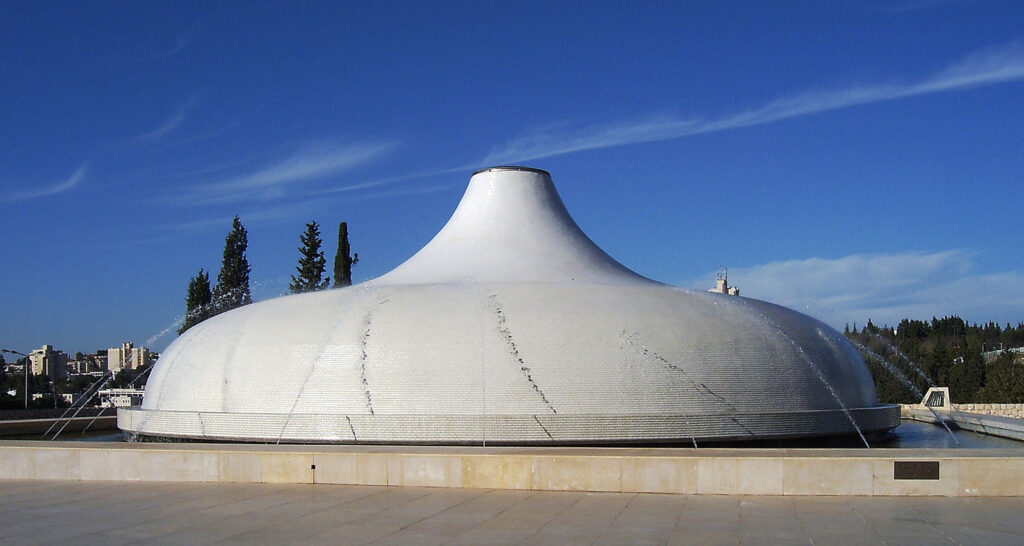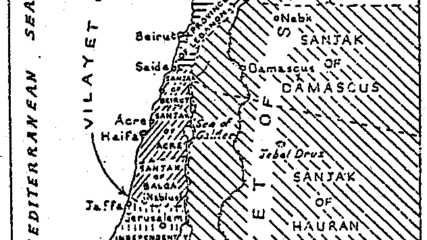April 20, 1965
The Shrine of the Book, built to house seven Dead Sea Scrolls found in the Qumran caves in 1947, opens as part of the Israel Museum in Jerusalem. Moshe Sharett announced the plan to build the Shrine of the Book when, as prime minister, he revealed in 1955 that Israel had purchased four of the scrolls.
The oldest of the Qumran manuscripts dates back to the third century B.C.E. Written mostly in Hebrew, the scrolls include some of the oldest copies of books of the Jewish Bible ever found, as well as other religious texts.
The Shrine of the Book is the work of Jewish architects Armand Bartos and Frederick Kiesler. The space has historical and biblical significance. The white domed roof represents the lids of the jars that held the scrolls. The corridor leading into the Shrine of the Book symbolizes the Qumran caves. The contrast between the white dome and the black wall alongside it alludes to the tension between the Sons of Light and the Sons of Darkness as depicted in the scrolls.
The museum rotates which scrolls are on display because of the fragility of the ancient documents. The Shrine of the Book’s collection includes the Isaiah Scroll, which is considered the oldest complete copy of the Book of Isaiah, believed to have been written in the third century B.C.E.
The museum also offers an interactive journey through the history of the scrolls and other ancient documents, including the Aleppo Codex, a copy of the Jewish Bible written in Tiberias in the 10th century C.E. More than half the codex was lost between 1947, when anti-Jewish rioting struck Aleppo, and 1958, when the document was smuggled from Syria into Israel.










